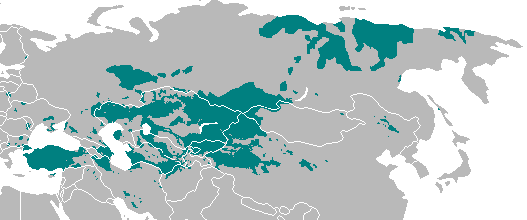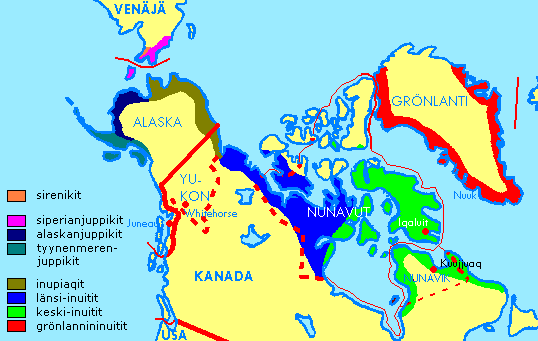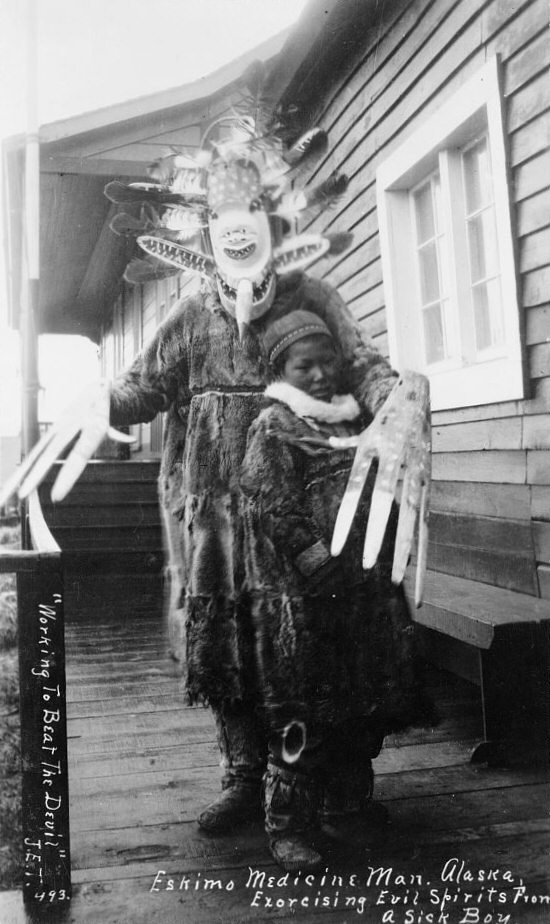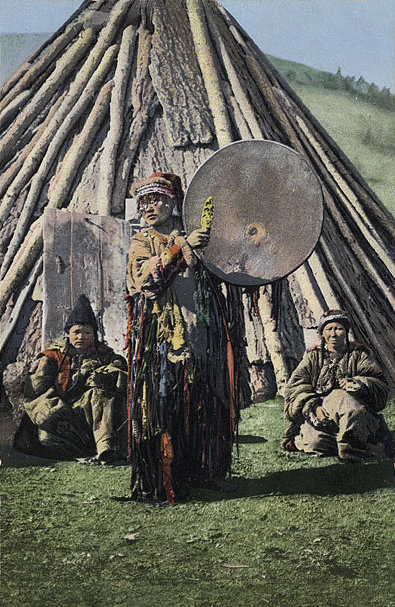Eurasian shamanism on:
[Wikipedia]
[Google]
[Amazon]
A large minority of people in North Asia, particularly in Siberia, follow the religio-cultural practices of
 Shamanistic practice shows great diversity, even if restricted to Siberia. In some cultures, the music or song related to shamanistic practice may mimic natural sounds, sometimes with onomatopoeia. Hoppál 2006: 143
Shamanistic practice shows great diversity, even if restricted to Siberia. In some cultures, the music or song related to shamanistic practice may mimic natural sounds, sometimes with onomatopoeia. Hoppál 2006: 143
This holds true for the practices of the noaidi among Sami groups. Although the



 Traditional culture of
Traditional culture of
 Among the Tungusic peoples of Siberia, shamanism is also widespread.
The ''
Among the Tungusic peoples of Siberia, shamanism is also widespread.
The ''
 Yup'ik groups comprise a huge area stretching from Eastern Siberia through Alaska and
Yup'ik groups comprise a huge area stretching from Eastern Siberia through Alaska and 

Site of publisher with short description on the book (in Hungarian)
. * * * * . The songs ar
from the ethnopoetics website curated by Jerome Rothenberg. * * Original data: * Shimamura, Ippei. ''The Roots Seekers: Shamamisn and Ethnicity Among the Mongol Buryats.'' Yokohama, Japan: Shumpusha, 2014. * * * Translation of the original: * *
shamanism
Shamanism is a religious practice that involves a practitioner (shaman) interacting with what they believe to be a Spirit world (Spiritualism), spirit world through Altered state of consciousness, altered states of consciousness, such as tranc ...
. Some researchers regard Siberia as the heartland of shamanism.Hoppál 2005:13
The people of Siberia comprise a variety of ethnic groups, many of whom continue to observe shamanistic practices in modern times. Many classical ethnographers recorded the sources of the idea of "shamanism" among Siberian peoples.Hoppál 2005: 15
Terminology in Siberian languages
*'shaman': ''saman'' (Nedigal, Nanay, Ulcha, Orok), ''sama'' (Manchu). The variant /šaman/ (i.e., pronounced "shaman") is Evenk (whence it was borrowed into Russian). *'shaman': (Yukagir) *'shaman': (Tatar, Shor, Oyrat), (Tuva, Tofalar) *The Buryat word for shaman is ''бөө'' (''böö'') , from early Mongolian ''böge''. *'shaman': ńajt (Khanty, Mansi), from Proto-Uralic (c.f. Sámi ) *'shamaness': (Mongol), (Yakut), (Buryat), (Evenki, Lamut), (Nedigal). Related forms found in various Siberian languages include , , , , , or . All these are related to the Mongolian name of Etügen, the hearth goddess, andEtügen Eke
Etügen Eke ("Mother Earth", also transliterated variously as Itügen or Etügen Ekhe) is an earth goddess in Tengrism. She was believed to be perpetually virginal. The word "etugen" associates with woman and daughter of Kayra. Also her name may ha ...
'Mother Earth'. Maria Czaplicka points out that Siberian languages use words for male shamans from diverse roots, but the words for female shaman are almost all from the same root. She connects this with the theory that women's practice of shamanism was established earlier than men's, that "shamans were originally female."
Spirit-journey
Siberian shamans' spirit-journeys (reenacting their dreams wherein they had rescued the soul of the client) were conducted in, e.g., Oroch, Altai, and Nganasan healing séances.Songs, music
This holds true for the practices of the noaidi among Sami groups. Although the
Sami people
Acronyms
* SAMI, ''Synchronized Accessible Media Interchange'', a closed-captioning format developed by Microsoft
* Saudi Arabian Military Industries, a government-owned defence company
* South African Malaria Initiative, a virtual expertise net ...
live outside of Siberia, many of their shamanistic beliefs and practice shared important features with those of some Siberian cultures.Voigt 1966: 296 The joiks of the Sami were sung on shamanistic rites. Recently, joiks are sung in two different styles: one of these is sung only by young people; the traditional one may be the other, the "mumbling" style, which resembles magic spells. Several surprising characteristics of joiks can be explained by comparing the music ideal
Ideal may refer to:
Philosophy
* Ideal (ethics), values that one actively pursues as goals
* Platonic ideal, a philosophical idea of trueness of form, associated with Plato
Mathematics
* Ideal (ring theory), special subsets of a ring considere ...
s, as observed in joiks and contrasted to music ideals of other cultures. Some joiks intend to mimic natural sounds. This can be contrasted to bel canto
Bel canto (Italian for "beautiful singing" or "beautiful song", )—with several similar constructions (''bellezze del canto'', ''bell'arte del canto'')—is a term with several meanings that relate to Italian singing.
The phrase was not associat ...
, which intends to exploit human speech organs on the highest level to achieve an almost "superhuman" sound.
The intention to mimic natural sounds is present in some Siberian cultures as well: overtone singing, and also shamanic songs of some cultures can be examples.
* In a Soyot
The Soyot are ethnic group of Turkic origin live mainly in the Oka region in the Okinsky District in the Buryatia, Russia. According to the 2010 census, there were 3,608 Soyots in Russia. Their extinct language (partly revitalized) was of a Tur ...
shamanic song, sounds of bird and wolf are imitated to represent helping spirits of the shaman.
* The seances of Nganasan shamans were accompanied by women imitating the sounds of the reindeer calf, (thought to provide fertility for those women).Hoppál 2005: 92 In 1931, A. Popov observed the Nganasan shaman Dyukhade Kosterkin imitating the sound of polar bear: the shaman was believed to have transformed into a polar bear.
Sound mimesis is not restricted to Siberian cultures and is not necessarily linked to shamanistic beliefs or practices. See, for example, Inuit throat singing, a game played by women, an example of Inuit music that employs overtone singing, and, in some cases, the imitation of natural sounds (mostly those of animals, e.g. geese). The imitation of animal sounds can also serve such practical reasons as luring game in hunt.Nattiez: 5
Grouped by linguistic relatedness


Uralic
Uralic languages are proven to form a genealogical unit, a language family. Not all speakers of these languages live in Siberia or have shamanistic religions. The largest populations, the Hungarians and Finns, live outside Siberia and are mostly Christian. Sámi people had kept shamanic practices alive for a long time. They live in Europe, but practiced shamanism until the 18th century.Hoppál 2005:84 Most others (e.g. Hungarian, Finnic, Mari) have only remnant elements of shamanism. The majority lives outside Siberia. Some of them used to live in Siberia, but have migrated to their present locations since then. The original location of the Proto-Uralic peoples (and its extent) is debated. Combined phytogeographical and linguistic considerations (distribution of various tree species and the presence of their names in various Uralic languages) suggest that this area was somewhere between the Kama and Vyatka rivers on the western side of the Ural Mountains.Samoyedic
Among several Samoyedic peoples shamanism was a living tradition also in modern times, especially at groups living in isolation until recent times ( Nganasans).Hoppál 2005:92–93 There were distinguished several types of shamans among Nenets,Enets
The Enets (russian: энцы, ; singular: , ; also known as Yenetses, Entsy, Entsi, Yenisei or Yenisey Samoyeds) are a Samoyedic peoples, Samoyedic ethnic group who live on the east bank, near the mouth, of the Yenisei River. Historically nomadic ...
,Hoppál 2005:89 and Selkup people. (The Nganasan shaman used three different crowns, according to the situation: one for upper world, one for underneath word, one for occasion of childbirth.)
Nenets people, Enets people
The Enets (russian: энцы, ; singular: , ; also known as Yenetses, Entsy, Entsi, Yenisei or Yenisey Samoyeds) are a Samoyedic ethnic group who live on the east bank, near the mouth, of the Yenisei River. Historically nomadic people, they now m ...
, Nganasan people
The Nganasans (; Nganasan: ''ŋənəhsa(nəh)'', ''ńæh'') are a Uralic people of the Samoyedic branch native to the Taymyr Peninsula in north Siberia. In the Russian Federation, they are recognized as one of the indigenous peoples of the Russ ...
speak Northern Samoyedic languages. They live in North Siberia (Nenets live also in European parts), they provide classical examples. Selkups
The Selkup (russian: селькупы), until the 1930s called Ostyak-Samoyeds (''остяко-самоеды''), are a Samoyedic speaking Uralic ethnic group native to Siberia. They live in the northern parts of Tomsk Oblast, Krasnoyarsk Krai a ...
are the only ones who speak Southern Samoyedic languages nowadays. They live more to the south, shamanism was in decline also at the beginning of the 20th century, although folklore memories could be recorded even in the 1960s.Hoppál 2005:94 Other Southern Samoyedic languages were spoken by some peoples living in the Sayan Mountains, but language shift has taken place, making all these languages extinct.Hajdú 1975:12Hajdú 1982:10
Nenets
There were several types of shamans distinguishing ones contacting upper world, ones contacting underneath world, ones contacting the dead.Hoppál 2005:88Nganasan
The isolated location of Nganasan people enabled thatshamanism
Shamanism is a religious practice that involves a practitioner (shaman) interacting with what they believe to be a Spirit world (Spiritualism), spirit world through Altered state of consciousness, altered states of consciousness, such as tranc ...
was a living phenomenon among them even in the beginning of the 20th century, the last notable Nganasan shaman's seances could be recorded on film in the 1970s.
One of the occasions in which the shaman partook was the ''clean tent rite'', held after the polar night, which included sacrifice
Sacrifice is the offering of material possessions or the lives of animals or humans to a deity as an act of propitiation or worship. Evidence of ritual animal sacrifice has been seen at least since ancient Hebrews and Greeks, and possibly exi ...
s.
Sayan Samoyedic
Some peoples of the Sayan Mountains spoke once Southern Samoyedic languages. Most of them underwent a language shift in the beginning and middle of the 19th century, borrowing the language of neighboring Turkic peoples. TheKamassian language
Kamassian () is an extinct Samoyedic language. It is included by convention in the Southern group together with Mator and Selkup (although this does not constitute a subfamily). The last native speaker of Kamassian, Klavdiya Plotnikova, died ...
survived longer: 14 old people spoke it yet in 1914. In the late 20th century, some old people had passive or uncertain knowledge of the language, but collecting reliable scientific data was no longer possible. Today Kamassian is regarded as extinct.
The shamanism of Samoyedic peoples in the Sayan Mountains survived longer (if we regard Karagas as a Samoyedic people, although such approaches have been refined: the problem of their origin may be more complex). Diószegi Vilmos could record not only folklore memories in the late 1950s, but he managed also to talk personally to (no longer practicing) shamans, record their personal memories, songs, some of their paraphernalia.
Whether this shamanism is borrowed entirely from neighboring Turkic peoples, or whether it has some ethnic features, maybe remnants of Samoyedic origin, is unresolved. Comparative considerations suggest, that
* Karagas shamanism is affected by Abakan-Turkic and Buryat influence. Among the various Soyot cultures, the central Soyot groups, keeping cattle and horses, show Khalkha Mongol
The Khalkha ( Mongolian: mn, Халх, Halh, , zh, 喀爾喀) have been the largest subgroup of Mongol people in modern Mongolia since the 15th century. The Khalkha, together with Chahars, Ordos and Tumed, were directly ruled by Borjigin khans ...
phenomena in their shamanism, the shamanism of Western Soyots, living on the steppe, is similar to that of Altai Turkic peoples. A shaman story narrates contacts between Soyots and Abakan Turkic peoples in a mythical form.
* Karagas and Eastern (reindeer-breeding, mountain-inhabiting) Soyots. have many similarities in their culture and shamanism. It was these two cultures who presented some ethnic features, phenomena lacking among neighboring Turkic peoples. E.g., the structure of their shamanic drum showed such peculiarity: it had ''two'' transoms.Diószegi 1960:198,243 It was also these two cultures who showed some features, which could be possibly of Samoyedic origin: the shaman's headdress, dress and boots has the effigies symbolizing human organs, mostly bones;Diószegi 1960:128,188,243 in the case of headdress, representation of human face. Also the dress-initiating song of the Karagas shaman Kokuyev contained the expression "my shamanic dress with seven vertebrae".Diószegi 1960:130 Hoppál interprets the skeleton-like overlay of the Karagas shaman-dress as symbol of shamanic rebirth,Hoppál 1994:75 similar remark applies for the skeleton-like iron ornamentation of the (not Samoyedic, but genealogically unclassified, Paleosiberian) Ket
Kentucky Educational Television (KET) is a state network of PBS member television stations serving the U.S. Commonwealth of Kentucky. It is operated by the Kentucky Authority for Educational Television, an agency of the Kentucky state governm ...
shamanic dress,Hoppál 1994:65 although it may symbolize also the bones of the loon
Loons (North American English) or divers (British / Irish English) are a group of aquatic birds found in much of North America and northern Eurasia. All living species of loons are members of the genus ''Gavia'', family Gaviidae and order Gavi ...
(the helper animal of the shaman).Hoppál 2005: 198 (The theory of Ket origin of the Karagas has already been mentioned above.) The skeleton-like overlay symbolized shamanic rebirth also among some other Siberian cultures.Hoppál 2005: 199
Hungarian
Starting from the late 9th century onwards, the ancestors of the Hungarian people migrated from their Proto-Uralic homeland in Siberia to the Pannonian Basin, an area that includes present-day Hungary. Today, shamanism is no longer widely practiced by Hungarians, but elements of shamanism have been preserved in their folklore. Comparative methods reveal that some motifs used in folktales, fragments of songs and folk rhymes retain aspects of the ancient belief system. In an effort to prove that shamanistic remnants existed within Hungarian folklore ethnographer, Diószegi Vilmos, compared ethnographic records of Hungarian and neighboring peoples, and works about various shamanic traditions of some Siberian peoples. Mihály Hoppál continued Diószegi Vilmos's work comparing shamanic beliefs of speakers of Uralic languages with those of several non-Uralic Siberian peoples. AlthoughUgrian
The Ugric or Ugrian languages ( or ) are a proposed branch of the Uralic language family. The name Ugric is derived from Ugrians, an archaic exonym for the Magyars (Hungarians) and Yugra, a region in northwest Russia.
Ugric includes three s ...
folklore preserves many traces of shamanism, shamanism itself was a dying practice among the Khanty and Mansi people by the 1930s. Shamanism is still practiced by many indigenous peoples,Hoppál 2005:96 but, among the modern Ugrians, shamanism is largely practiced by the Khanty.
Ket
 Traditional culture of
Traditional culture of Ket people
Kets (russian: Кеты; Ket: Ostygan) are a tribe of Yeniseian speaking people in Siberia. During the Russian Empire, they were known as Ostyaks, without differentiating them from several other Siberian people. Later, they became known as ''Ye ...
was researched by Matthias Castrén, Vasiliy Ivanovich Anuchin, Kai Donner
Karl (Kai) Reinhold Donner (1 April 1888 in Helsinki – 12 February 1935) was a Finnish linguist, ethnographer and politician. He carried out expeditions to the Ugric and Samodeic peoples in Siberia 1911–1914 and was docent
The ti ...
, Hans Findeisen, Yevgeniya Alekseyevna Alekseyenko. Shamanism
Shamanism is a religious practice that involves a practitioner (shaman) interacting with what they believe to be a Spirit world (Spiritualism), spirit world through Altered state of consciousness, altered states of consciousness, such as tranc ...
was a living practice in the 1930s yet, but by the 1960s almost no authentic shaman could be found. Ket shamanism shared features with those of Turkic
Turkic may refer to:
* anything related to the country of Turkey
* Turkic languages, a language family of at least thirty-five documented languages
** Turkic alphabets (disambiguation)
** Turkish language, the most widely spoken Turkic language
* ...
and Mongolic peoples.Hoppál 2005: 172 Besides that, there were several types of shamans,Hoppál 2005: 171 differing in function (sacral rites, curing), power and associated animal (deer, bear). Also among Kets (like at several other Siberian peoples, e.g. Karagas), there are examples of using skeleton symbolics, Hoppál interprets it as a symbol of shamanic rebirth, although it may symbolize also the bones of the loon
Loons (North American English) or divers (British / Irish English) are a group of aquatic birds found in much of North America and northern Eurasia. All living species of loons are members of the genus ''Gavia'', family Gaviidae and order Gavi ...
(the helper animal of the shaman, joining air and underwater world, just like the shaman who travelled both to the sky and the underworld as well). The skeleton-like overlay represented shamanic rebirth also among some other Siberian cultures.
Turkic
Turkic
Turkic may refer to:
* anything related to the country of Turkey
* Turkic languages, a language family of at least thirty-five documented languages
** Turkic alphabets (disambiguation)
** Turkish language, the most widely spoken Turkic language
* ...
peoples spread over large territories, and are far from alike. In some cases, shamanism has been widely amalgamated with Islam
Islam (; ar, ۘالِإسلَام, , ) is an Abrahamic religions, Abrahamic Monotheism#Islam, monotheistic religion centred primarily around the Quran, a religious text considered by Muslims to be the direct word of God in Islam, God (or ...
, in others with Buddhism, but there are surviving traditions among the Siberian Tatars
Siberian Tatars ( sty, , ), the ethnographic and ethnoterritorial group of Tatars of Western Siberia, the indigenous Turkic-speaking population of the forests and steppes of Western Siberia, originate in areas stretching from somewhat east of ...
, Tuvans, and Tofalar.
The Altai Turks may be related to neighboring Ugrian
The Ugric or Ugrian languages ( or ) are a proposed branch of the Uralic language family. The name Ugric is derived from Ugrians, an archaic exonym for the Magyars (Hungarians) and Yugra, a region in northwest Russia.
Ugric includes three s ...
, Samoyed, Ket
Kentucky Educational Television (KET) is a state network of PBS member television stations serving the U.S. Commonwealth of Kentucky. It is operated by the Kentucky Authority for Educational Television, an agency of the Kentucky state governm ...
, or Mongols.Hoppál 2005:106 There may be also ethnographic traces of such past of these nowadays Turkic-speaking peoples of the Altai. For example, some of them have phallic-erotic fertility rites, and that can be compared to similar rites of Ugriansɮ.
Tungusic
 Among the Tungusic peoples of Siberia, shamanism is also widespread.
The ''
Among the Tungusic peoples of Siberia, shamanism is also widespread.
The ''Tale of the Nisan Shaman ''The Tale of the Nisan Shaman'' (also spelled "Nishan"; ) is a Manchu folk tale about a female shaman who resurrects the son of a rich landowner.
Versions
Variants of the tale are also found among the Evenk, Daur, and Nanai peoples. The tale ...
'', a famous piece of folklore which describes the resurrection of a rich landowner's son by a female shaman, is known among various Tungusic peoples including the Manchus, Evenks, and Nanai people.
Koryak and Chukchi
Linguistically, Koryak and Chukchi are close congeners of Yup'il. Koryak shamanism is known.Yupik
 Yup'ik groups comprise a huge area stretching from Eastern Siberia through Alaska and
Yup'ik groups comprise a huge area stretching from Eastern Siberia through Alaska and Northern Canada
Northern Canada, colloquially the North or the Territories, is the vast northernmost region of Canada variously defined by geography and politics. Politically, the term refers to the three Provinces_and_territories_of_Canada#Territories, territor ...
(including Labrador Peninsula) to Greenland. Shamanistic practice and beliefs have been recorded at several parts of this vast area crosscutting continental borders.Kleivan & Sonne 1985Merkur 1985Gabus 1970
Like Yup'ik cultures themselves, shamanistic practices reveal diversity. Some mosaic-like examples from various cultures: the soul concepts of the various cultures were diverse as well, some groups believed that the young child had to be taken for by guardian names inherited from a recently deceased relative. Among some groups, this belief amounted to a kind of reincarnation. Also shamanism might include beliefs in soul dualism
Soul dualism, also called dualistic pluralism or multiple souls, is a range of beliefs that a person has two or more kinds of souls. In many cases, one of the souls is associated with body functions ("body soul") and the other one can leave the bod ...
, where the free-soul of the shaman could fly to celestial or underneath realms, contacting mythological beings, negotiating with them in order to cease calamities or achieve success in hunt. If their wrath was believed to be caused by taboo breaches, the shaman asked for confessions by members of the community.
In most cultures, shamanism could be refused by the candidate: calling could be felt by visions, but generally, becoming a shaman followed conscious considerations.


Demographics
The 2002 census of the Russian Federation reports 123,423 (0.23% of the population) people of ethnic groups which dominantly adhere to "traditional beliefs"See also
* Indigenous peoples of the Russian North * Shamanism in the Qing dynasty *Shamanism in Russia
Religion in Russia is diverse, with Christianity, especially Russian Orthodoxy, being the most widely professed faith, but with significant minorities of non-religious people and adherents of other faiths. A 1997 law on religion recognises the ...
*Chinese shamanism
Chinese shamanism, alternatively called Wuism (; alternatively ''wū xí zōngjiào''), refers to the shamanic religious tradition of China. Its features are especially connected to the ancient Neolithic cultures such as the Hongshan culture. ...
*Korean shamanism
Korean shamanism or Mu-ism is a religion from Korea. In the Korean language, alternative terms for the tradition are ''musok'' () and ''mugyo'' (무교, 巫敎). Scholars of religion have classified it as a folk religion. There is no central auth ...
* Manchu shamanism
* Mongolian shamanism
* Reindeer in Siberian Shamanism
*Ainu religion
The Ainu are the indigenous people of the lands surrounding the Sea of Okhotsk, including Hokkaido Island, Tōhoku region, Northeast Honshu Island, Sakhalin Island, the Kuril Islands, the Kamchatka Peninsula and Khabarovsk Krai, before the arri ...
*
Notes
References
* * * The book has been translated to English: * * * * * * * * , also in German, Estonian and FinnishSite of publisher with short description on the book (in Hungarian)
. * * * * . The songs ar
from the ethnopoetics website curated by Jerome Rothenberg. * * Original data: * Shimamura, Ippei. ''The Roots Seekers: Shamamisn and Ethnicity Among the Mongol Buryats.'' Yokohama, Japan: Shumpusha, 2014. * * * Translation of the original: * *
External links
* Stanislav Krupar's photos of Siberian shamans Homepage , url=http://www.krupar.com/index.php?file=www/en/gallery/gallery.html&cat=5 * * * * * It describes the life of Chuonnasuan, the last shaman of the Oroqen of Northeast China. * * * Rendering in English: ''Ungazik
Providensky District (russian: Провиде́нский райо́н; Chukchi: , ''Urèlḳujym rajon''; Yupik: Уӷрилӄуйым район) is an administrativeLaw #33-OZ and municipalLaw #45-OZ district (raion), one of the six in Chukotka ...
settlement'', Kunstkamera, Russian Academy of Sciences. Old photos about former life of a Siberian Yupik
Siberian Yupiks, or Yuits (russian: Юиты), are a Yupik peoples, Yupik people who reside along the coast of the Chukchi Peninsula in the far Russian Far East, northeast of the Russia, Russian Federation and on St. Lawrence Island in Alask ...
settlement, including those of a shaman, performing his séance.
*
{{DEFAULTSORT:Shamanism in Siberia
Asian shamanism
Siberia